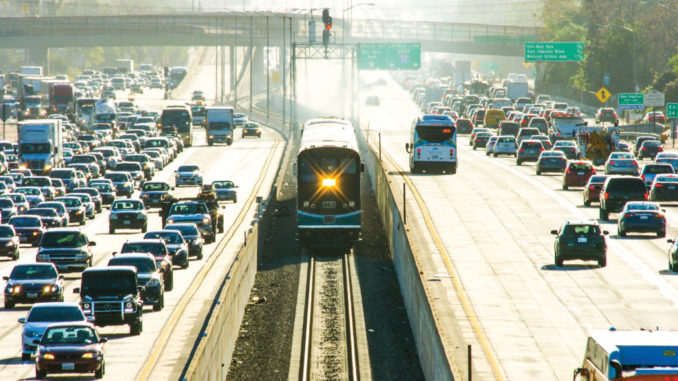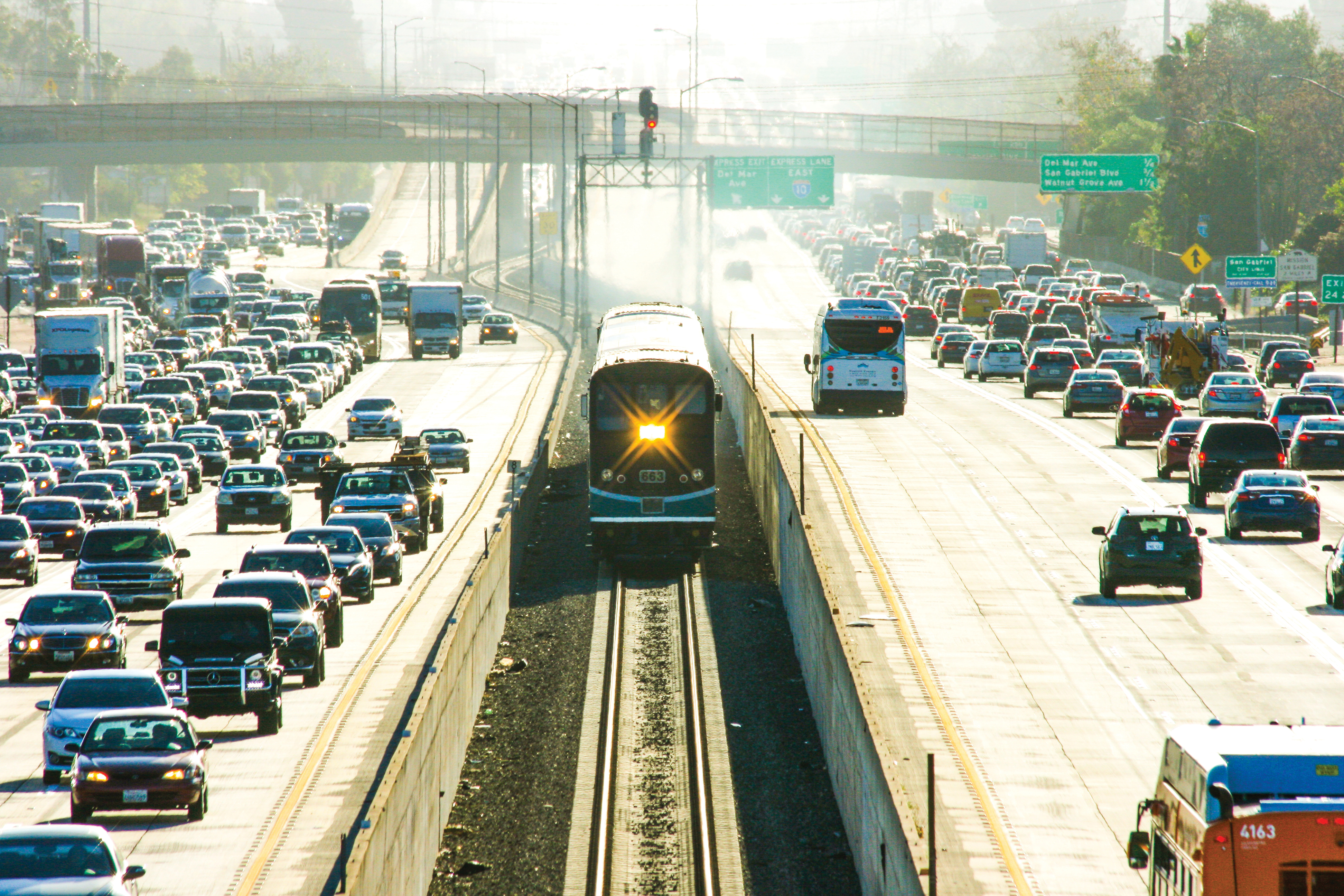
A job applicant walked into the Metrolink offices expounding on the accomplishments of Metro. He even wrote a follow-up email to Metrolink saying what a great job Metro has been doing with trains and buses.
Goes to show ya how many people get those two agencies confused. Metro is the Los Angeles County Metropolitan Transportation Authority, responsible for buses, subways and light-rail only in L.A. County. Metrolink uses diesel locomotives pulling train cars on tracks for its commuter rail service operating in six Southern California counties.
Art Leahy knows a lot about both agencies. He spent 25 years at Metro and started as a bus driver, detoured to transit agencies in Minnesota and Orange County, before coming back to Metro. About 2 1/2 years ago he “retired” and left his post as CEO of Metro and became Metrolink’s CEO.
In honor of Metrolink’s 25th anniversary this week, I asked Art about his current job, Metrolink’s future and his days at Metro:
GreenWay: You were about 65 when you left Metro. Now you are 68. How much longer will you work?
Leahy: I was going to retire this year, but the board asked me to stay. My contract expires in 2 1/2 years. I am grooming two people to replace me.
GW: You won’t be working the 2028 Olympics. Tell me about the 1984 Summer Olympic Games and transit’s role?
Leahy: I worked the 1984 Olympics. It was great. We were running one bus a minute between downtown L.A. and the Coliseum. We used 500 buses for a system that lasted 17 days.
GW: What was the significance of the 17 days of traffic relief in L.A. during that time?
Leahy: We had a burst of interest in relieving traffic on the freeways. Then came Metrolink. We saw a shift in the urban form. For years, people said L.A. was not like New York or Chicago because it was spread out. Then we realized this is a big city. The Blue Line (Metro rail) opened in 1990 and the Red Line subway in 1993. That was the first burst of a re-establishment of rail service that had disappeared in the 1950s.
GW: Why is a ride on Metrolink more expensive than a ride on Metro rail?
Leahy: We have a paradoxical situation: Long trips take cars off freeways. But we also have the lowest subsidy in Southern California. Metrolink gets 44 percent of revenue from fares (including payments from other agencies), while Metro’s farebox returns are about 20 percent. But yes, higher fares do discourage people from riding the train.
GW: Metrolink has about 44,000 daily riders. Will that increase?
Leahy: The freeway system has a fixed capacity. So ask yourself: How do you relieve or avoid freeway traffic? The only answer is Metrolink.
GW: What about Uber, Lyft and other ridesharing services?
Leahy: I think Uber and Lyft are a complement to our service. They are not competition.
GW: When I do stories on Metrolink, passengers always talk about trains being late and unreliable. How can you fix that?
Leahy: I think that is an issue. The causes are structural. About 60 percent of our mileage is single track. So, any kind of delay ripples through the system and you can’t get around whatever is going on. If we are waiting for an outbound line to clear, all inbound lines are stuck.
GW: What is the solution?
Leahy: Double tracking. We are studying a double track on the San Bernardino line from San Dimas (at Lone Hill Avenue) to La Verne at White Avenue. That would add 4 miles of double track and it connects to an existing double track. We could move a train over if we needed to get by it. Also, double tracking has a subtle benefit to neighbors. On a single track, a train sits and waits for an approaching train to pass. He sits in a neighborhood with the engine running.
GW: What other improvements would you like to make to service?
Leahy: We’d like to add more mid-day and night trains. Over time it is possible, but it is a financial issue. We don’t have the funding. Right now you can’t take a (Metrolink) train to and from a Dodger game. That bothers me, the fact that you can’t go to a Dodger game and take the (Metrolink) train home (because trains don’t run late). You can’t really do that on this system because there is not much night service.
GW: What does the future look like?
Leahy: We will improve ticketing systems to make it more convenient for customers and try to run more reliable service because of double-tracking. And get more funding to run more trains at night and mid-day. It’s pennies on the dollar to expand Metrolink. I think the future is bright.
Steve Scauzillo covers transportation and the environment for the Southern California News Group. He’s a recipient of the Aldo Leopold Award for Distinguished Editorial Writing from The Wilderness Society. Follow him on Twitter or Instagram @stevscaz or email him at sscauzillo@scng.com.





